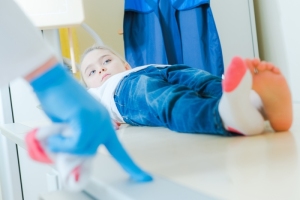by
Lauren Dubinsky, Senior Reporter | March 08, 2018

Fewer motion and
pulsation artifacts
Pediatric patients are notorious for moving during MR exams, which results in lower-quality images, but researchers in Seoul, South Korea have found a way to counteract that.
The study, titled “Three-Dimensional Radial VIBE Sequence for Contrast-Enhanced Brain Imaging: An Alternative for Reducing Motion Artifacts in Restless Children”, was recently published in the
American Journal of Roentgenology.
The results showed that a radial volumetric interpolated breathhold exam (radial VIBE) for contrast-enhanced brain MR, performed on children, is a viable alternative to the conventional method – magnetization-prepared rapid-acquisition gradient-echo (MP-RAGE) sequence.



Ad Statistics
Times Displayed: 656
Times Visited: 5 Fast-moving cardiac structures have a big impact on imaging. Fujifilm’s SCENARIA View premium performance CT brings solutions to address motion in Coronary CTA while delivering unique dose saving and workflow increasing benefits.
Children may find it difficult to hold their breath, and that could lead to artifacts during the image acquisition process, according to a study published in the
Indian Journal of Radiology and Imaging. In addition, younger children may require sedation or general anesthesia, which is associated with risks.
The research team performed 65 consecutive contrast-enhanced brain MR exams with MP-RAGE, and radial VIBE sequences were included. They then evaluated each image for motion, pulsation artifacts, overall image quality and lesion conspicuity.
The images generated with the radial VIBE sequence had fewer motion and pulsation artifacts than those obtained with the MP-RAGE sequence. Radial VIBE images also had significantly higher scores for all qualitative parameters, including overall image quality, among the 25 images with major motion artifacts.

